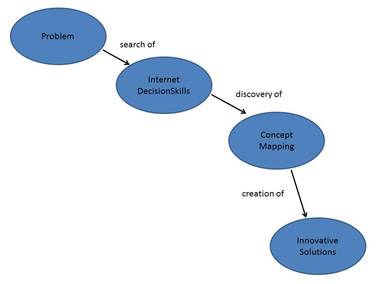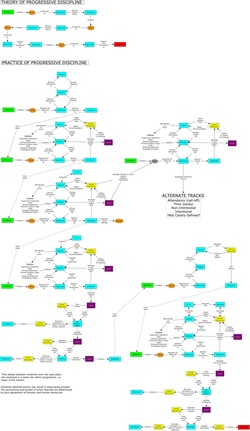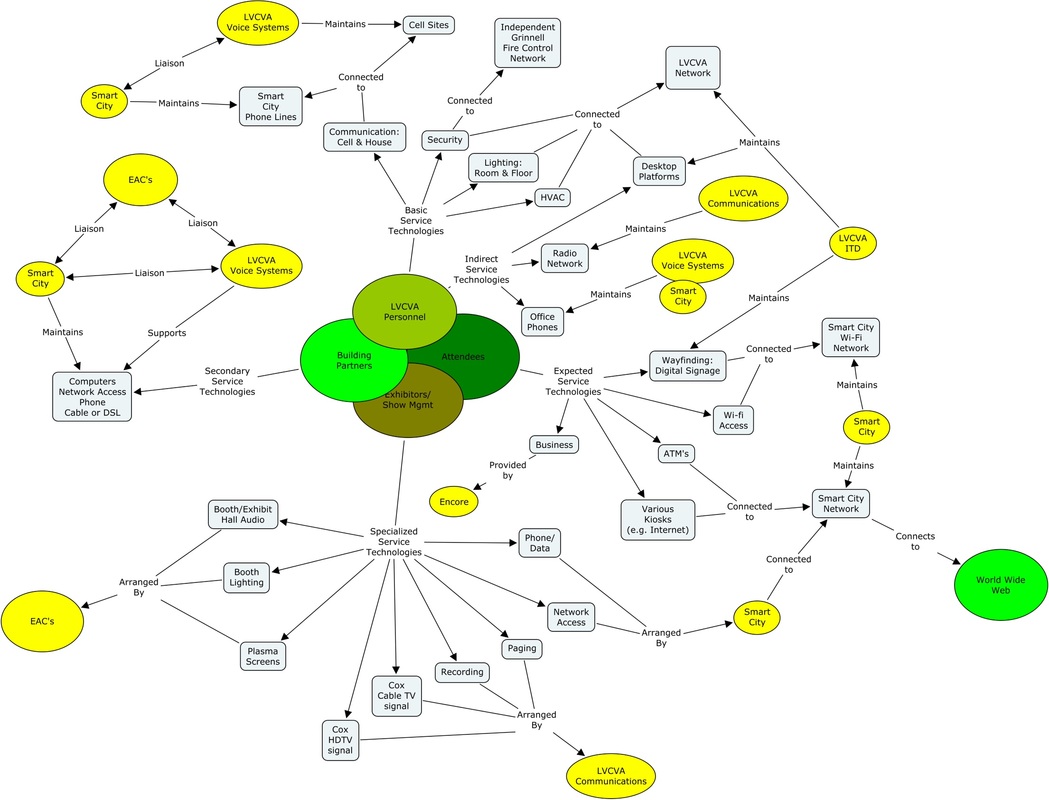Concept Mapping
As a problem solving tool, a concept map can be a way to gain a better understanding of relationships between elements of a problem thereby helping not only to define the problem, but helping to identify where solutions may be most effective. Concept mapping can be a useful way for teams to visually represent and come to agreement on the nature of a problem.
Creating a Concept Map
Concept maps are constructed for any number of reasons, but when constructing a map in an effort to address a perceived problem the map is started by first writing a problem statement. It is important to spend time making sure the problem statement is accurate and should include input from those that could be impacted or be involved with resolution.
After the problem statement has been clearly defined the goal of the concept map is to convert the statement into a visual representation of the problem. This involves writing down concepts and then connecting the concepts with lines that have a proposition of the nature of the relationship between the concepts. In most diagrams concepts are surrounded by circles or boxes and propositions are included above the line along with arrows indicating a direction or flow between the concepts. For instance "problems lead to searching for solutions, which takes you to the Internet which then allows you to find the technique of concept mapping which ends with an innovative solution" might be diagramed:
Creating a Concept Map
Concept maps are constructed for any number of reasons, but when constructing a map in an effort to address a perceived problem the map is started by first writing a problem statement. It is important to spend time making sure the problem statement is accurate and should include input from those that could be impacted or be involved with resolution.
After the problem statement has been clearly defined the goal of the concept map is to convert the statement into a visual representation of the problem. This involves writing down concepts and then connecting the concepts with lines that have a proposition of the nature of the relationship between the concepts. In most diagrams concepts are surrounded by circles or boxes and propositions are included above the line along with arrows indicating a direction or flow between the concepts. For instance "problems lead to searching for solutions, which takes you to the Internet which then allows you to find the technique of concept mapping which ends with an innovative solution" might be diagramed:
Creating a concept map takes time and many times requires multiple drafts with plenty of revisions. Typically the final version of the map is created to be read from left to right and top to bottom, but this is not always the case, especially if a problem is discovered to be systemic. In the end a concept map should look similar to the examples below.
Success
You know a concept map is a success when (1) those involved in the creation of the map come to consensus that the map accurately represents the problem and (2) when you can show the map to a third party and they understand the problem.
Next Steps
Once you have a good concept map, the next step is to identify points in the map that may present the best opportunities to solve the problem. In problem solving, this means you transition from having defined the problem to now using the map as a tool for developing solutions.
You know a concept map is a success when (1) those involved in the creation of the map come to consensus that the map accurately represents the problem and (2) when you can show the map to a third party and they understand the problem.
Next Steps
Once you have a good concept map, the next step is to identify points in the map that may present the best opportunities to solve the problem. In problem solving, this means you transition from having defined the problem to now using the map as a tool for developing solutions.



